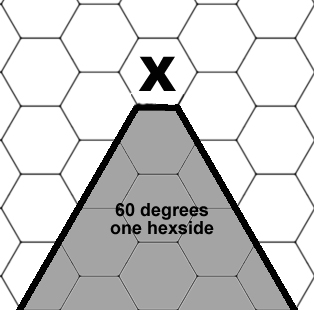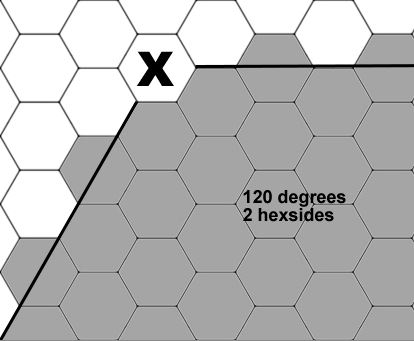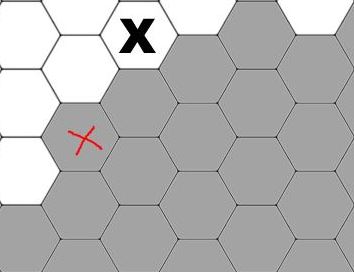Difference between revisions of "The West That Wasnt - Advanced Conflict"
(→Surprise) |
|||
| (One intermediate revision by the same user not shown) | |||
| Line 4: | Line 4: | ||
Action often occurs outside the purview of the senses of some characters. When one of more characters may be surprised, the Judge will call for a surprise check. This is a Standard (5) difficulty Acuity check during action time, or if a character expects danger; Difficult (9) at other times. If the check fails, that character is unable to act this round (save for defensive actions such as dodge). They can act normally in the next round as long as they make an Easy (3) bravery check. | Action often occurs outside the purview of the senses of some characters. When one of more characters may be surprised, the Judge will call for a surprise check. This is a Standard (5) difficulty Acuity check during action time, or if a character expects danger; Difficult (9) at other times. If the check fails, that character is unable to act this round (save for defensive actions such as dodge). They can act normally in the next round as long as they make an Easy (3) bravery check. | ||
| − | ''Miranda leads the way out of the saloon. Her first instinct is | + | ''Miranda leads the way out of the saloon. Her first instinct is to keep Cyril and Hank safe, since they are from back east and old, respectively. She is consequently wary of danger and informs the Judge. When a gang of toughs spring from concealment, she will need to make a TN 5 Acuity check to resist surprise, while Hank and Cyril will need 9.'' |
==Expecting Danger?== | ==Expecting Danger?== | ||
Latest revision as of 09:59, 26 July 2020
Contents
Surprise
Action often occurs outside the purview of the senses of some characters. When one of more characters may be surprised, the Judge will call for a surprise check. This is a Standard (5) difficulty Acuity check during action time, or if a character expects danger; Difficult (9) at other times. If the check fails, that character is unable to act this round (save for defensive actions such as dodge). They can act normally in the next round as long as they make an Easy (3) bravery check.
Miranda leads the way out of the saloon. Her first instinct is to keep Cyril and Hank safe, since they are from back east and old, respectively. She is consequently wary of danger and informs the Judge. When a gang of toughs spring from concealment, she will need to make a TN 5 Acuity check to resist surprise, while Hank and Cyril will need 9.
Expecting Danger?
How is it determined whether a character is expecting danger? This is somewhat up to the player, as well as the group, but some guidelines are provided here. First and foremost, no one is expecting danger at all times. A player who attempts to abuse the surprise rules by always indicating the character is looking for danger (such as when entering every room, every new scene, etc.) shall be considered to never be looking for danger. If looking for danger is the first thing the character always does, then that is their default state, not a "looking for danger" state.
Characters who are constantly on the lookout have high Acuity. By purchasing a high Acuity trait, the player gains a high ability to detect danger in the default state.
In general, a character is looking for danger when they inform the Judge, when they have any weapon drawn, or have spoken within a moment or two about drawing a weapon. Otherwise, the character is not considered in a state of heightened awareness.
Advanced Rule: Fields of Fire
Most weapons have a field of fire of 60 degrees (one hex side). What is a field of fire? In TWTW, each combat action has an AP cost that simulates how easy the action is to do. The field of fire is the area where a given weapon type can be easily manipulated on target within the time of an action. It costs 1 extra AP to acquire a target outside the field of fire.
It is possible that a character may begin an aim action in one round, and conclude it by firing in another. If the target has moved out of the field of fire during the aim, the shot may still be attempted, but the aim will be lost.
A field of fire is not used if the character begins and resolves the shot within the same action.
Handguns are a special case. Because they are small, light and maneuverable, handguns have a 120 degree field of fire. When determining if a target has left the field of fire, trace a line between the two hexes with the original target position.
These rules as written work just fine if you do not use hex maps, or even if you do not use a tactical map at all. Because of the wonders of math, if a target moves more than half of the range from the firer in a perpendicular direction from the firer they have exited a 60 degree arc of fire. If they move more than an equal amount of the range, they have exited a 120 degree arc of fire.
Hey, that isn't so bad after all!
Angus Laroq is staring down Miranda at 10 meters, with his Walker Colt pointed directly at her. Miranda is in a precarious position, her trusty Peacemaker having been shot from her hand by one of his worthless goons wielding a rifle right next to him. Angus and the flunky both aimed with their last action, and are now ready to fire. Next round, Miranda goes first due to her renowned quickness. Her Move is 9, so if she moves 6 paces directly to her left, she will be out of the firing arc for rifle-toting henchman, but still within for Angus and his Walker. If she uses her full movement, plus 3 more (for 7 APs), for a total of 12 paces, she will be outside both firing arcs.
Procedure
Aim actions can be executed like any other action, or as a continuous action (if for some reason the firer decides not to fire and the target remains in the field of fire). If used as a continuous action, aim may be held over multiple rounds. The center of the field is automatically adjusted each declaration phase (in other words, the facing of the firer is adjusted to the center of the target). For each round after the first where an aim is held, add in the Accurate bonus (in parentheses).
If the target attempts to move after an aim action is complete, and the shooter has yet to move (their turn has not yet come in the movement stack) they may attempt their shot before the target moves. Otherwise, the shooter may instead choose to hold the aim and follow the target. If the target moves out of the field of fire, the shooter loses aim.
Cyril Wellington has drawn a bead on Francisco Del Valle with his Winchester '73. Francisco is only 2 paces from the edge of the field, so Cyril knows there is a risk he could move out of range. When Francisco attempts to move, Cyril can declare an attempted shot, or wait.
Optional Rule: Arc edges. In the preceding figure for 120 degrees, the arc edge is colored in for the hexes that lie on the border, even if a portion of the hex is outside of the 120 degrees (such as in the figure, below). In the 60 degree figure, only the actual angle is colored. For an extra level of gritty detail, if a target is only able to move into a hex that is halfway within the arc, it is possible they have made it into the clear. This can be easily resolved by drawing a card and consulting the toggle result in the bottom right.
When should this card be drawn? This all depends on the desires of your group. The two suggested choices are: when the movement occurs or when the shot is attempted. Each one delivers a different tactical flavor. If it is done when the movement resolves, the aiming character will have a choice with their next action, and can break and do something else. If, instead, it is done as the shot is attempted, the TN could be adjusted significantly. It is suggested that if this optional rule is used, no matter the implementation, that checking the toggle is a resolution, and the card should be used for nothing else.
It could even be handled differently between players and NPCs, skilled and unskilled characters, etc. Play the game you want to play!
Called Shots
When your pistol has one shot remaining, you need to be sure and make it count. Hitting a specific spot on your target is a "called shot”. Called shots adjust the TN, with smaller targets causing larger adjustments. The table below is for targeting people, ask the Judge if you need to extrapolate something on a horse, or hit a spittoon or the like.
Size Penalty
torso -2
Legs, arms -4
Heads, hands, feet -6
Eyeball, heart -10
Hit Location Modifiers
+1 bump "UP" When punching or using attacks with the punch attribute
+1 bump "UP" with height advantage when fighting
+1 bump "UP" Point-blank range when firing a weapon
+1 bump "DOWN" when kicking or using an attack with the kick attribute
These bump modifiers are applied if the given situation is present, and are not optional. At the discretion of the Judge, they may be modified or ignored, such as in the case of a character at point-blank who indicates they are pointing at the legs (change the bump to down, instead of up).


